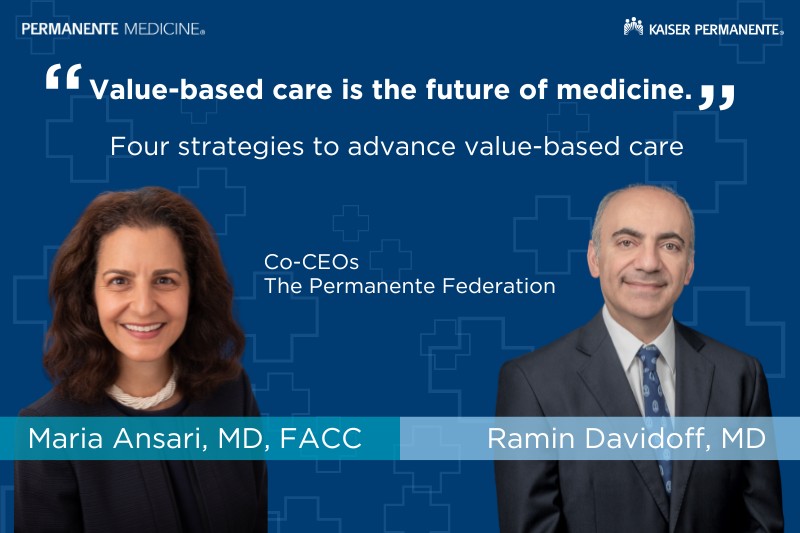In The Permanente Journal, an expert panel discussed how artificial intelligence can supercharge innovation within health care.
In health care innovation, what’s old is new again, writes Ramin Davidoff, MD
New ideas in health care are actually older approaches undergoing a revival, Ramin Davidoff, MD, executive medical director and chair of the board for the Southern California Permanente Medical Group, wrote recently in HealthLeaders.
While tech pioneers, venture capitalists, and innovators perpetually pursue the next big thing in health care, new technologies and growing evidence support the resurgence of older approaches to improve outcomes and revolutionize the patient experience, while lowering costs.
“There’s no doubt that innovation is critical to moving the health system forward,” wrote Dr. Davidoff, who also serves as chair of the board and CEO for The Southeast Permanente Medical Group; chair of the board and CEO of the Hawaii Permanente Medical Group; and co-CEO of The Permanente Federation. “What’s more surprising is seeing so many approaches from the past continue to drive progress.”
Related health care innovation podcast: “Creating a better patient experience with advanced care at home”
Dr. Davidoff highlighted 3 health care innovations that are making a comeback:
- House calls. The phrase evokes images of a physician on horseback making the rounds with a black leather doctor’s bag. As late as the 1930s, house calls made up nearly 40% of physician-patient interactions, but by the end of the 1980s, just 1% of such interactions took place in the home. Today, health systems can deliver a full spectrum of care in patients’ homes. Enabled by telemedicine and remote monitoring, care teams can now manage chronic conditions and conduct physical therapy appointments. In addition, nearly 100% of talk therapy sessions now occur via video. COVID-19 government waivers were recently extended for 2 more years to encourage expanding the house call concept to acute-level hospital care in patients’ homes.
- Value-based care. The Affordable Care Act, which celebrated its 13th anniversary in March, didn’t invent the concept of value-based care but it accelerated the movement. It laid the foundation for many health systems to test innovative approaches for delivering higher quality care in return for incentive payments and bonuses. Meanwhile, the federal government set ambitious goals for moving away from quantity-oriented, fee-for-service payment arrangements to models that prioritize better health outcomes at a lower cost. Varying degrees of success have been achieved across performance and participation targets. However, it’s clear the federal government and health systems are committed to value-based models, thanks to the growing body of evidence that value-based care delivers better patient outcomes at lower costs.
- Care coordination. The emergence of electronic health records facilitated the more efficient flow of information between a patient’s primary care physician and the many specialists and other members of a patient’s care team — to the benefit of patients. Health systems continue to acquire or merge with community-based services and physician practices to enable clearer and more effective communication and coordination on behalf of patients. This movement toward coordination also improves the quality of care while making it more affordable.
Note: You can read the full article on HealthLeaders.
Value-based care: Read more stories on building better outcomes and lowering costs


